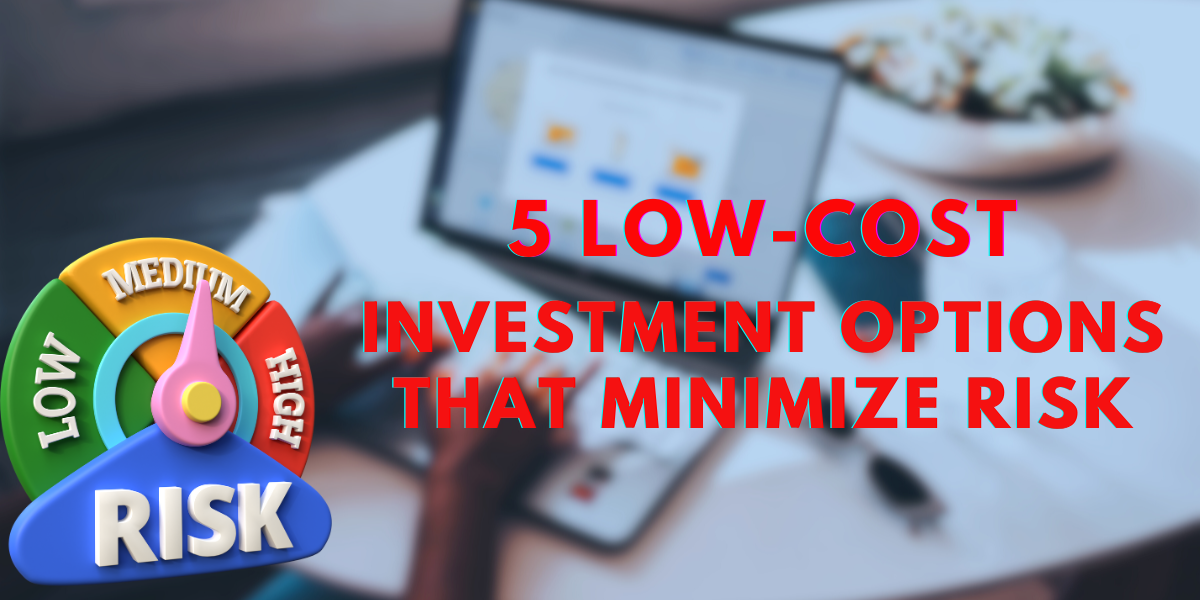As an aspiring investor with limited capital, it can be intimidating to get started. It can be due to the many options out there leaving you confused. Also, risks that come with every investment scare a lot of people. You don’t have to be one of them – just try to start small.
Low-risk investments as a beginner before going big are a smart choice. Even though you’ll get small returns, these options are safer than volatile ones. Low-risk investments allow you to reduce potential losses and be aware of uncertain periods. They’re less stressful to deal with and can inspire you to learn more about investing when you get your first returns.
If you don’t know what to choose, here you’ll read about the five best low-risk investment options. You’ll know the essentials about each option before committing yourself. Are you up for grabs? Let’s dive in!
-
Index Funds
One of the easiest channels for new investors is through index funds. By holding index funds for the long term, you might see growth aligned with market trends, although this isn’t guaranteed as market conditions vary. As a low-risk tolerant investor, you’ll find index funds diverse and quite cheap. They allow you to grow, and you have nothing to be scared of. Index funds have a reputable track record.
Even most experts agree that they are worthy of long-term investments. However, you need to know that index funds can only achieve market returns. They cannot beat the market. Also, they lack downside protection. That means they can leave you vulnerable during losses or when the market crashes if you invest short-term.
-
Dividend Stocks
If you’re looking for a reliable source of passive income, you won’t go wrong investing in dividend stocks. Most passive income streams like this one are effortless. They don’t need you to be involved all the time to earn.
While dividend stocks can provide a regular income stream, it’s important to understand that they carry risk, and dividends can vary based on the company’s performance and decisions. They offer you a passive income and have a potential for growth. But you need to know that you may experience dividend policy changes. So, before investing in a dividend stocks company, consult a trusted financial advisor first. You will get the right help.
-
Micro-Investing Apps
You can easily access micro-investing apps, especially if you’re on a tight budget. All you need is a smartphone and some spare money, and you can invest from anywhere. To get started, choose a reliable micro-investing app and create a profile. After that, answer a few questions and link your bank account to start investing.
Another advantage of these apps is that you require little money. For instance, you can decide to contribute $5 every week or even a dollar every day.
However, while micro-investing apps are a great start, consider their limitations and fees as you grow your investment; some may not be as effective for larger investment goals. Consider apps with large account types that allow you to grow. Also, be aware of the fees included in some micro-investing apps. They could eat up your investment returns.
-
Exchange-Traded Funds (ETFs)
Invest in ETFs to enjoy a lot of benefits. They offer lower operating costs, greater transparency, flexible trading, and many more. So, this is an ideal option for you if you’re a first-time investor. ETFs are unique, and just like mutual funds, they offer you a way to pool your money in a fund that can make bonds, stocks, or other assets. And in that investment pool, you will get an interest.
When it comes to fees, ETFs have a lower expense ratio because they are managed passively. You’ll find out that most mutual funds are actively managed.
On the downside, ETFs have lower dividend yields compared to other groups of stocks. However, ETFs offer a range of diversification options, including access to various market sectors, international stocks, and more, not just large-cap stocks. The good news is that these risks are low. If you’re a serious investor, you can put your shirt on and invest.
-
Bonds
Bonds are often a key component of a diversified investment portfolio, offering the potential for steady income and risk mitigation. They are a low-risk investment and will protect you against inflation. Bonds would also be great if you want to have a predictable, steady income.
You won’t sweat in your retirement dealing with expenses. The only biggest stumbling block with bonds is that their returns are lower than those of stocks. Therefore, it all depends on how much you want to grow over time.
Conclusion
While low-risk investments can provide more stability, it’s important to understand that all investments carry some degree of risk. Your best option depends on your personal risk tolerance and investment goals. Always consult a financial planner to help you achieve your long-term goals as an investor.
Whether you’re a first-timer or your capital is limited, there is an investment option for everyone. What matters is your interest and willingness to start and continue because investing is a long-term game you either win or lose.


 Tags:
Tags:










